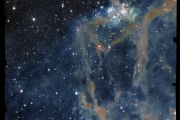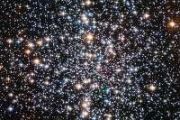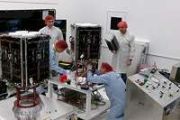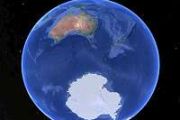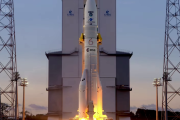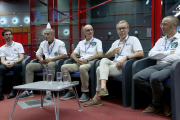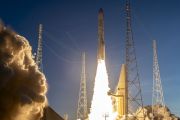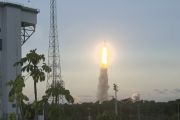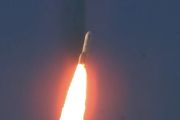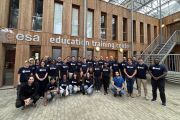
Copernical Team
LUNA’s virtual leap towards the Moon

Rough terrain, deep shadows and blinding light – training for lunar missions means facing an environment unlike anything on Earth. At the ESA-DLR LUNA analogue facility, virtual reality (VR) technology makes it possible for astronauts to immerse themselves in a 360-degree simulation of the lunar surface without leaving the ground.
Crew wraps week with spacesuit upgrades and experiments on respiration and circulation in orbit
 The Expedition 72 team aboard the International Space Station (ISS) closed out their week with a focus on spacesuit enhancements and critical biomedical research. As one group adjusted to the rigors of microgravity, another prepared for their journey home after months in orbit.
NASA astronauts Anne McClain and Nichole Ayers spent Friday outfitting two spacesuits with newly installed displa
The Expedition 72 team aboard the International Space Station (ISS) closed out their week with a focus on spacesuit enhancements and critical biomedical research. As one group adjusted to the rigors of microgravity, another prepared for their journey home after months in orbit.
NASA astronauts Anne McClain and Nichole Ayers spent Friday outfitting two spacesuits with newly installed displa Space Collision Threat Fuels Urgency in Orbital Safety Market
 A new analysis from Novaspace, a prominent space sector consultancy, warns that the rapidly expanding satellite population is pushing orbital collision risk toward a critical tipping point. To confront this growing challenge, the firm has launched its inaugural Space Situational and Domain Awareness (SSDA) Market Intelligence Report.
"With the increasing deployment of mega-constellations i
A new analysis from Novaspace, a prominent space sector consultancy, warns that the rapidly expanding satellite population is pushing orbital collision risk toward a critical tipping point. To confront this growing challenge, the firm has launched its inaugural Space Situational and Domain Awareness (SSDA) Market Intelligence Report.
"With the increasing deployment of mega-constellations i Massive black hole 'waking up' in Virgo constellation
 A massive black hole at the heart of a galaxy in the Virgo constellation is waking up, shooting out intense X-ray flares at regular intervals that have puzzled scientists, a study said Friday.
Astronomers previously had little reason to pay any attention to galaxy SDSS1335+0728, which is 300 million light years from Earth.
But in 2019, the galaxy suddenly started shining with a brightnes
A massive black hole at the heart of a galaxy in the Virgo constellation is waking up, shooting out intense X-ray flares at regular intervals that have puzzled scientists, a study said Friday.
Astronomers previously had little reason to pay any attention to galaxy SDSS1335+0728, which is 300 million light years from Earth.
But in 2019, the galaxy suddenly started shining with a brightnes Do "completely dark" dark matter halos exist?
 Every galaxy is thought to form at the center of a dark matter halo - a region of gravitationally bound matter that extends far beyond the visible boundaries of a galaxy. Stars are formed when gravity within dark matter halos draws in gas, but astrophysicists don't yet know whether star-free dark matter halos exist.
Now Ethan Nadler, a computational astrophysicist at UC San Diego, has calc
Every galaxy is thought to form at the center of a dark matter halo - a region of gravitationally bound matter that extends far beyond the visible boundaries of a galaxy. Stars are formed when gravity within dark matter halos draws in gas, but astrophysicists don't yet know whether star-free dark matter halos exist.
Now Ethan Nadler, a computational astrophysicist at UC San Diego, has calc Research reveals tidal forces disrupting nearby dwarf galaxy
 New research led by Satoya Nakano and Kengo Tachihara at Nagoya University has uncovered compelling evidence that the Small Magellanic Cloud (SMC), one of the Milky Way's closest galactic neighbors, is undergoing tidal disruption due to gravitational forces from its larger companion, the Large Magellanic Cloud (LMC). Published in The Astrophysical Journal Supplement Series, the findings offer ne
New research led by Satoya Nakano and Kengo Tachihara at Nagoya University has uncovered compelling evidence that the Small Magellanic Cloud (SMC), one of the Milky Way's closest galactic neighbors, is undergoing tidal disruption due to gravitational forces from its larger companion, the Large Magellanic Cloud (LMC). Published in The Astrophysical Journal Supplement Series, the findings offer ne SwRI links solar jet to unprecedented helium-3 surge
 The Solar Orbiter mission, a collaboration between NASA and ESA, has detected the most intense concentration of the rare helium-3 (3He) isotope ever recorded from the Sun, sparking new interest in the origin of solar energetic particles (SEPs). Scientists led by Southwest Research Institute (SwRI) have now traced the source of this extraordinary event to a diminutive solar jet on the Sun's surfa
The Solar Orbiter mission, a collaboration between NASA and ESA, has detected the most intense concentration of the rare helium-3 (3He) isotope ever recorded from the Sun, sparking new interest in the origin of solar energetic particles (SEPs). Scientists led by Southwest Research Institute (SwRI) have now traced the source of this extraordinary event to a diminutive solar jet on the Sun's surfa From dormant giant to erupting beacon black hole Ansky shocks astronomers
 ESA's XMM-Newton telescope has become instrumental in monitoring an extraordinary cosmic awakening: a massive black hole in a galaxy 300 million light-years away has transitioned from complete dormancy to producing the most powerful and extended X-ray eruptions ever observed.
The black hole lies in SDSS1335+0728, an otherwise unremarkable galaxy in Virgo. After decades of inactivity, it be
ESA's XMM-Newton telescope has become instrumental in monitoring an extraordinary cosmic awakening: a massive black hole in a galaxy 300 million light-years away has transitioned from complete dormancy to producing the most powerful and extended X-ray eruptions ever observed.
The black hole lies in SDSS1335+0728, an otherwise unremarkable galaxy in Virgo. After decades of inactivity, it be Just Keep Driving - Sols 4507-4508
 Earth planning date: Wednesday, April 9, 2025: Our drive from Monday's plan was mostly successful, putting us ~22 meters down the "road" out of an expected 30 meters. A steering command halted the drive a little short when we tried to turn-in-place but instead turned into a rock, which also had the effect of making our position too unstable for arm activities. Oh well! APXS data has been showing
Earth planning date: Wednesday, April 9, 2025: Our drive from Monday's plan was mostly successful, putting us ~22 meters down the "road" out of an expected 30 meters. A steering command halted the drive a little short when we tried to turn-in-place but instead turned into a rock, which also had the effect of making our position too unstable for arm activities. Oh well! APXS data has been showing Astronomers identify rare Earth-crossing asteroid from unexpected source
 Astronomers at W. M. Keck Observatory on Maunakea, Hawai'i, have traced the origin of 2024 YR4, an Earth-crossing asteroid discovered in December 2024, to a surprising location. Contrary to expectations, the solid, stony asteroid appears to have emerged from a central Main Belt asteroid family between Mars and Jupiter-a region not previously associated with Earth-crossing bodies.
"YR4 spin
Astronomers at W. M. Keck Observatory on Maunakea, Hawai'i, have traced the origin of 2024 YR4, an Earth-crossing asteroid discovered in December 2024, to a surprising location. Contrary to expectations, the solid, stony asteroid appears to have emerged from a central Main Belt asteroid family between Mars and Jupiter-a region not previously associated with Earth-crossing bodies.
"YR4 spin 








